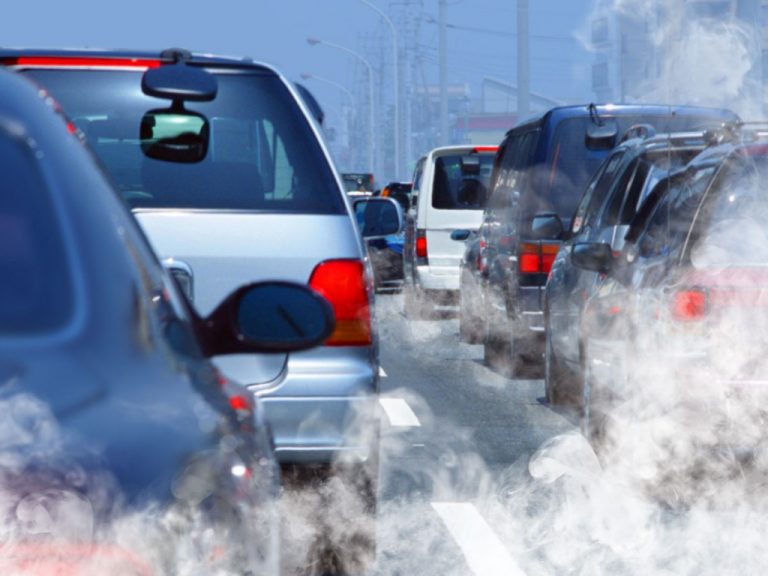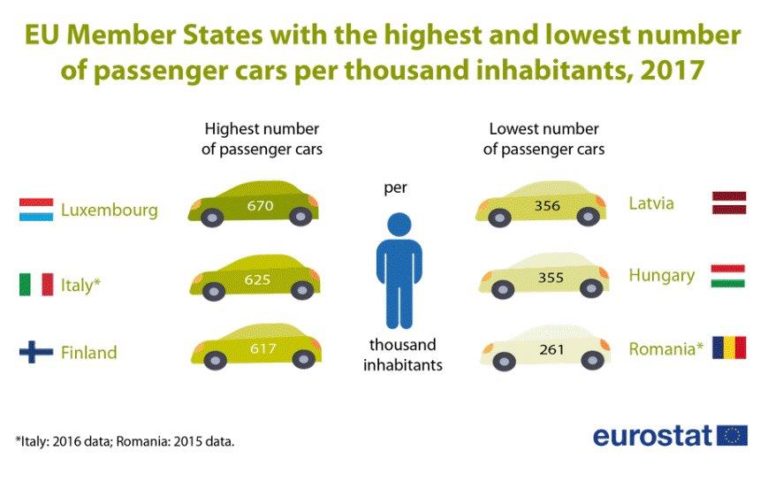Romania is the EU country with the fewest cars in terms of the number of inhabitants, according to data recently published by Eurostat.
We appear in the European statistics with only 261 cars/thousand inhabitants (data for 2015), after Latvia (356 cars/1000 inhabitants) and Hungary (355 cars/1000 inhabitants), far from the top list that includes Luxembourg , Italy and Finland, which each have a roughly double proportion compared to the countries from the bottom of the list.
Even if we were to update the Eurostat data based on the DRPCIV statistics, that is, to bring into discussion the 6,451 thousand cars registered at national level for 2018 instead of the 5,155 thousand based on which the chart has been drawn up, we would reach an endowment of 326 cars/1000 inhabitants, which means that we definitely remained the last.
It is worth noting that, as we benefit from the considerable increase in incomes registered over the last three years, we strongly catch up (+ 25% advance in car park) and the consumption trend in terms of endowment with cars will most likely follow the Italian socio-cultural model, a country that is at the top of car ownership although it is not even remotely at the top of European standard of living.
Severe disproportion between diesel and gasoline: a comparison with other EU states
In this context, beyond the definitive quantitative advance, heavily based unfortunately on registrations of second hand from the West, the issue arises in terms of types of cars entering the roads in Romania.
Here we have a very poor position in terms of air pollution, with a massive disproportion between new registrations on gasoline and diesel.
Specifically, in 2017 we ranked third in the EU by the proportion of new registrations of motor cars on diesel, with a percentage of 67.3%. Only Croatia (76.1%) and Lithuania (68.5%) were ahead of us, while in other states in the region such as Hungary (54.3%) or Poland (53.8%), most of the new registrations to the traffic were on gasoline.
Basically, we have placed ourselves (in this chapter as well) against the European trend in the matter, where the tone was set by the Netherlands (80% new registrations on gasoline), Finland (68.7%), Denmark (64.4%), Germany (57.7%) and the United Kingdom (57.6%).
Unfortunately, the inflow of used cars with relatively more polluting Diesel engines (otherwise a common phenomenon in the east of the continent) pushed us one year back, to the position of entering the infringement procedure on air quality, with Bucharest, Brasov and Iasi as targeted cities.
Not to mention that, apart from the major imbalance between new Diesel and gasoline registrations (hybrid and electric cars remain less attractive, despite efforts to subsidize them through „Rabla” Program), the car park age does not help either, although we inherited a slightly better mix and we are currently mostly on gasoline (3,534 thousand cars) compared to Diesel (2,890 thousand cars).
In terms of the number of years, proportions of Romanians’ cars are as follows:
*
- Between 0-5 years old
- Between 6-10 years old more than 5 years old
- Between 11-15 years old more than 10 years old
- Between 16-20 years old more than 15 years old
- More than 20 years old more than 20 years old
*
Obviously, with almost four-fifths of cars older than ten years, even if they comply with pollution standards on which they have been WHILE AGO manufactured, we are really dealing with a pollution transfer from the west to the east of the continent, favoured by the lower purchasing power but also by insufficient measures taken to protect not only the environment but also population’s health.
For reference, we mention that this month, Paris has banned the use of diesel vehicles older than 18 years, as well as those on gasoline older than 21 years, on an area where more than 70% of the capital city’s population lives. In January 2021, the interdiction will be extended to polluting vehicles registered before 2005.
All in all, it would be important to keep in mind, given the conditions under which the car park is and will be, for objective reasons, in a sharp increase (we already have 71,620 new cars and another 217,701 used cars registered only in the first half of 2019) to the quality of vehicles put into service and measures needed in order to not repeat the mistakes of western countries in terms of air quality and population’s health protection.













